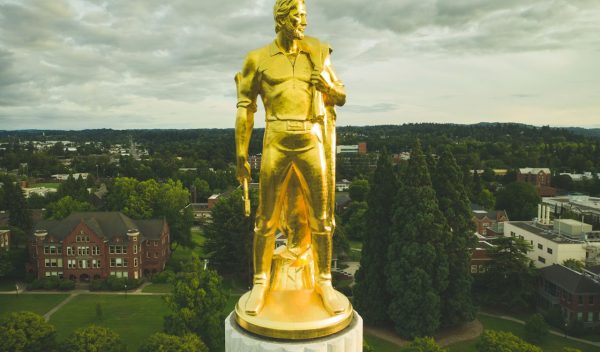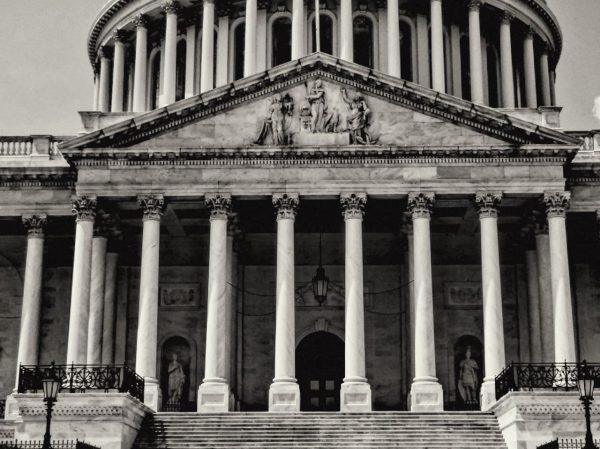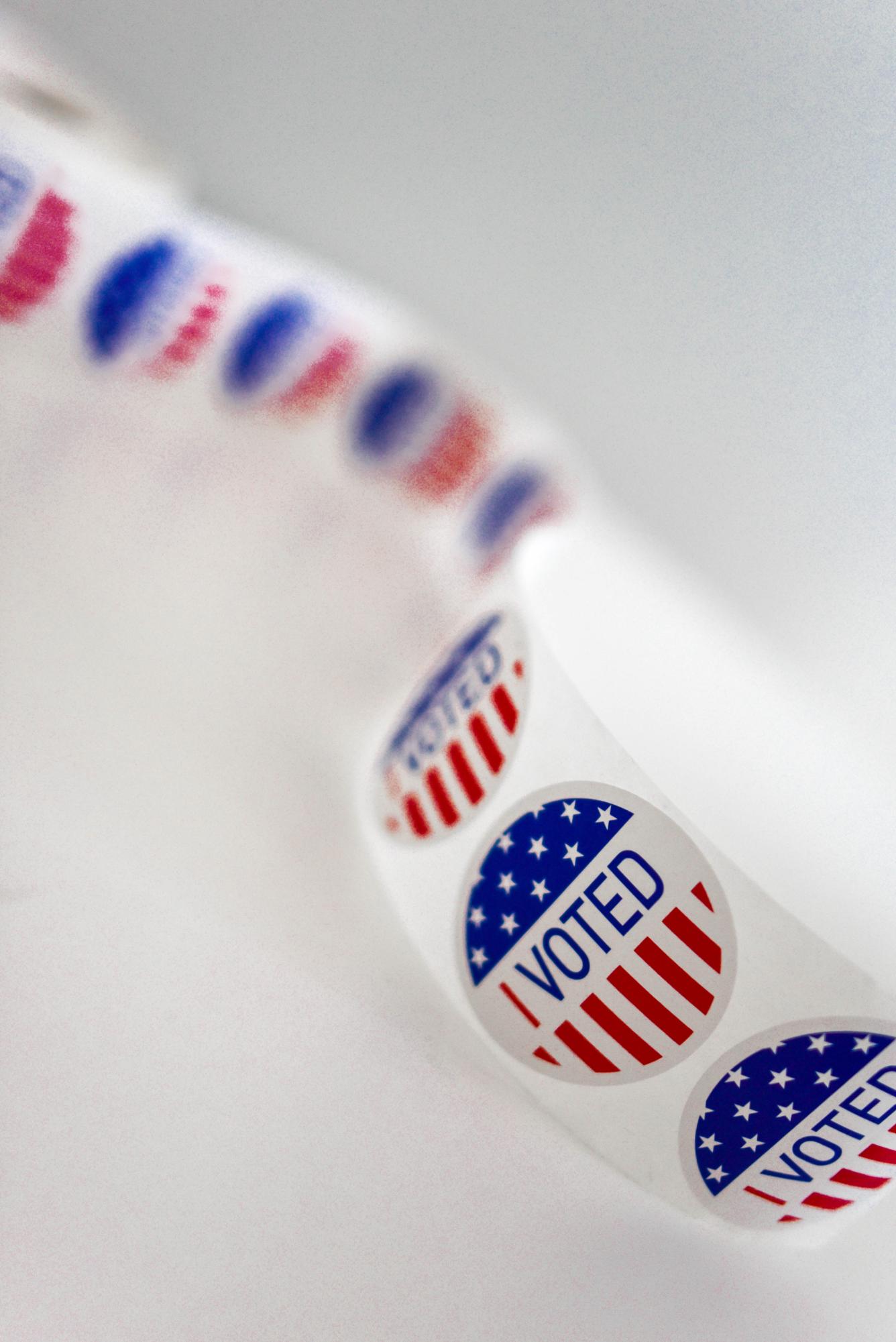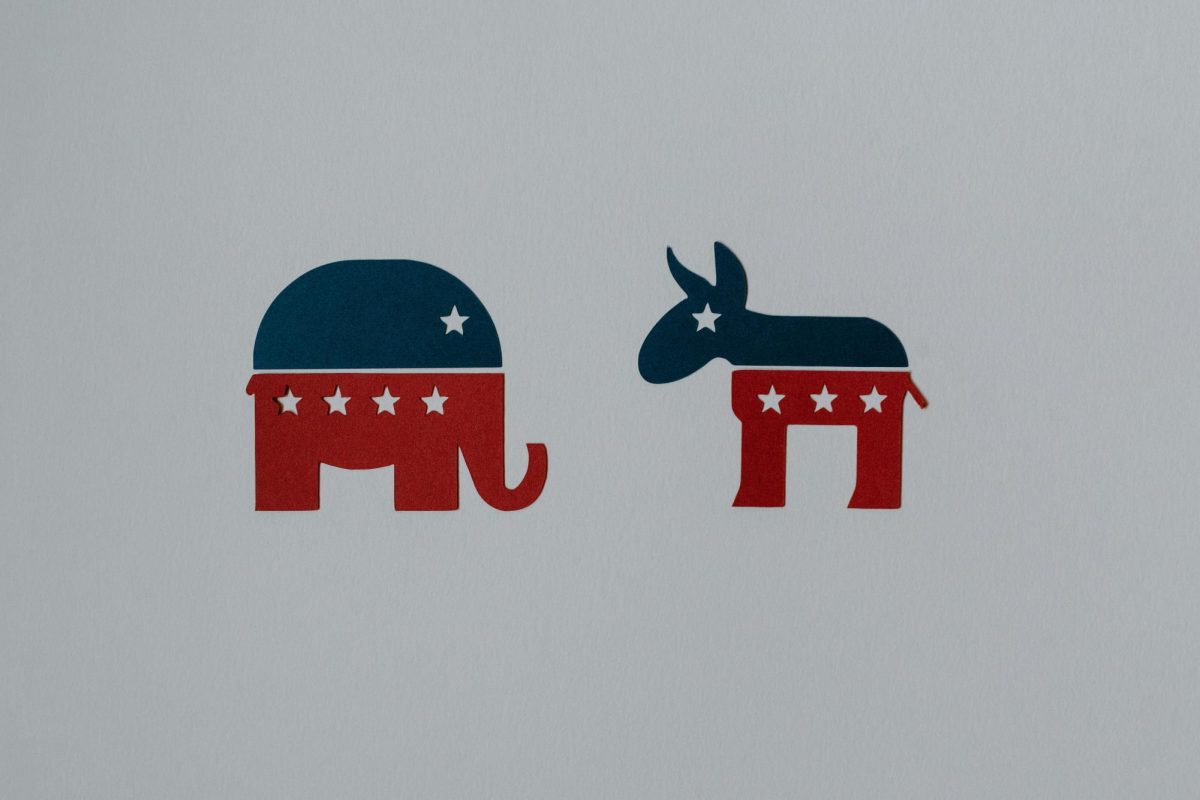(This story was originally published in The Elevator in June, 2023.)
Oregon City, Oregon – The following scene can be observed across the country: the sensation of the holidays is in the air – meals are set throughout the table with items such as steaming plates of ham & mashed potatoes.
Family members are discussing the various situations they’ve found themselves in, whether that includes experiences or a hobby they took up; the mood of the conversations are cheerful, that is until the topic of state policy comes up, and the family is split.
Throughout the United States, the issue of polarization manifests itself throughout its states, one of them being Oregon in which its more rural areas which – which lie mostly in the state’s second congressional district, which voted for the former president Donald J. Trump in the 2020 Presidential Election.
There are many complexities as to why there are divisions among civilians in the United States in the mind of Richard Clucas, a professor of political science at Portland State University.
Polarization in Oregon manifests itself in issues such as the marijuana debate, and in terms of economics, the flow of wealth from the Willamette Valley, which wouldn’t resonate with the more conservative individuals in ‘postmodern’ regions.
‘Postmodern’ regions according to him are the more rural regions of Oregon’s second congressional district – due to more taxes, Clucas said in an interview with Oregon City High School’s reporting team.

Gun Control & Rights
A factor of political division concerns the use of firearms. After the 2022 midterm elections , the Oregon legislative branch introduced measures regarding the matter.
One of which – HB 2005, a law that passed on May 2 – would outlaw the distribution & sale of unregistered firearms, which would include penalties like 10 years imprisonment or/with a $250,000 fine, according to the state’s website.
This May, Oregon State Republicans have boycotted the measures, alongside others regarding issues like abortion, by avoiding legislative sessions to stop them from being enacted in law.
As to why Republicans are boycotting laws, Rep. Greg Smith in a speech – which was reported by the Associated Press – to the Oregon Legislative Branch said that he questions why his daughter can’t protect herself with a firearm.
“I have a beautiful 19-year-old daughter and I want to know, what did she do wrong to have this imposed on her?” Smith continued on to say, “I want to know, what did my beautiful daughter do wrong to where she can’t protect herself? I don’t get it.”
As reported by the Associated Press, Democrats such as Rep. Jason Kropf , legislation regarding the distribution of firearms is a necessary step to prevent further shootings.
“In my mind, there are guns that are made for hunting. And if you’re under the age of 21, you can have those. There are guns that are made for shooting people, and we’re going to limit access to those,” Kropf said.

The Marijuana Debate
Another complexity of political division in Oregon, according to Richard Clucas, is marijuana production near the state’s eastern border.
Due to Oregon’s legalization of marijuana, many Idahoans cross the border into Oregon towns to buy marijuana due to the fact that it’s outlawed.
One of such towns is Ontario, where cannabis producers are claiming that politicians are interfering with their business.
In an article published by National Public Radio, Steven Meland, who opened up Hotbox Farms, stated that politicians “have been able to have this scenario where they say that they don’t have legal cannibis,” and that “in all actuality, we all know there’s legal cannibis in Boise.”
One of the proponents of the Greater-Idaho movement, Representative Barbara Erhart argued that drugs are becoming a problem to the state because of distribution.
“A lot of Idahoans are going there to get drugs,” Erhart noted at a hearing over a bill that would lead to talks with Oregon lawmakers to move the border.
By moving the border, according to Erhart, drug use from marijuana will be pushed hundreds of miles away.

The Greater Idaho Movement & State of Jefferson
Due to factors like the marijuana and firearms debate – alongside the factor of taxes, which increases with an influx of investments in eastern counties – in the years of 2022 & 2023, the Greater-Idaho movement gained traction in Oregon’s second congressional district.
So far, 12 counties within the area passed measures to raise to prospect of the annexation of Eastern Oregon by Idaho, a state dominated by the Republican Party.
A major factor of polarization is the fact that counties are being ignored, according to Mark Simmons, former house leader of the Oregon Legislature, in his Op-Ed for the Idaho Statesman.
“We are dismayed by the manner in which the Oregon government has marginalized our values and villainized our resource-based livelihood,” Simmons said.
Richard Clucas of Portland State University said political movements like those calling for the annexation of Eastern Oregon by Idaho were noted to be recurring, for there was also the State of Jefferson movement.
In a 1941 advertisement highlighted on the Jefferson Times, the State of Jefferson movement declared a secessionist movement against California & Oregon due to “gross neglect” that deprives them of necessary economic resources like “roads to bring out the copper ore.”
In past iterations of the movement, the State of Jefferson movement was noted to not succeed in its efforts to establish the state; according to the Texas Historical Association, the movement only garnered the support of 6 senators in the Texas legislature.
According to the association’s website, they stated the following: “No more than six senators supported the measure, and other proposals to the Thirty-fourth Legislature were equally fruitless.”
In a report by the Spokane Times, the Greater-Idaho movement also faces some issues, particularly garnering support from the state’s legislature, according to the Governor Little of Idaho in a talk with reporters at Post Halls in 2021, in which he said that the “state legislature in Oregon has to endorse it” alongside Idaho’s state legislature. In addition, he said that such a measure would require the approval of 2/3s of Congress.

Mending the Divide
According to Richard Clucas, despite the ‘symbolic’ efforts of the Greater-Idaho movement, an ‘important’ first step of the process is when Tina Kotek decided to visit the state’s second district.
As reported by Oregon Public Broadcast early on May 4, the governor visited Marrow County as part of her One Oregon initiative – which would mark the first time a state leader would visit the area in 30 years – as part of her tour of the eastern portions of the state.
Kotek talked of heeding the demands of the people of which are proponents of the Greater-Idaho movement who’ve say they’ve been ignored by the government.
The first issue she said she’d like to focus on is nitrate levels in the water and stated her desire to make the water clean.
“We have to reduce the pollutants going into the watershed. There’s a lot of effort going on to make sure we have a long-term solution. Our job is to hold people accountable.”
In Marrow County alone, about 40% of the water in wells are contaminated with a high level of nitrate, according to Oregon Rural Action.
Kotek said that her team is trying to understand what is needed, and if there’s not enough effort put in, she’d said she’d return to the region to better understand the inhabitants’ demands.







